10 Best Types of Ornamental Grass That Are Native
Create a gorgeous, low-maintenance landscape with these North American beauties that also support wildlife.
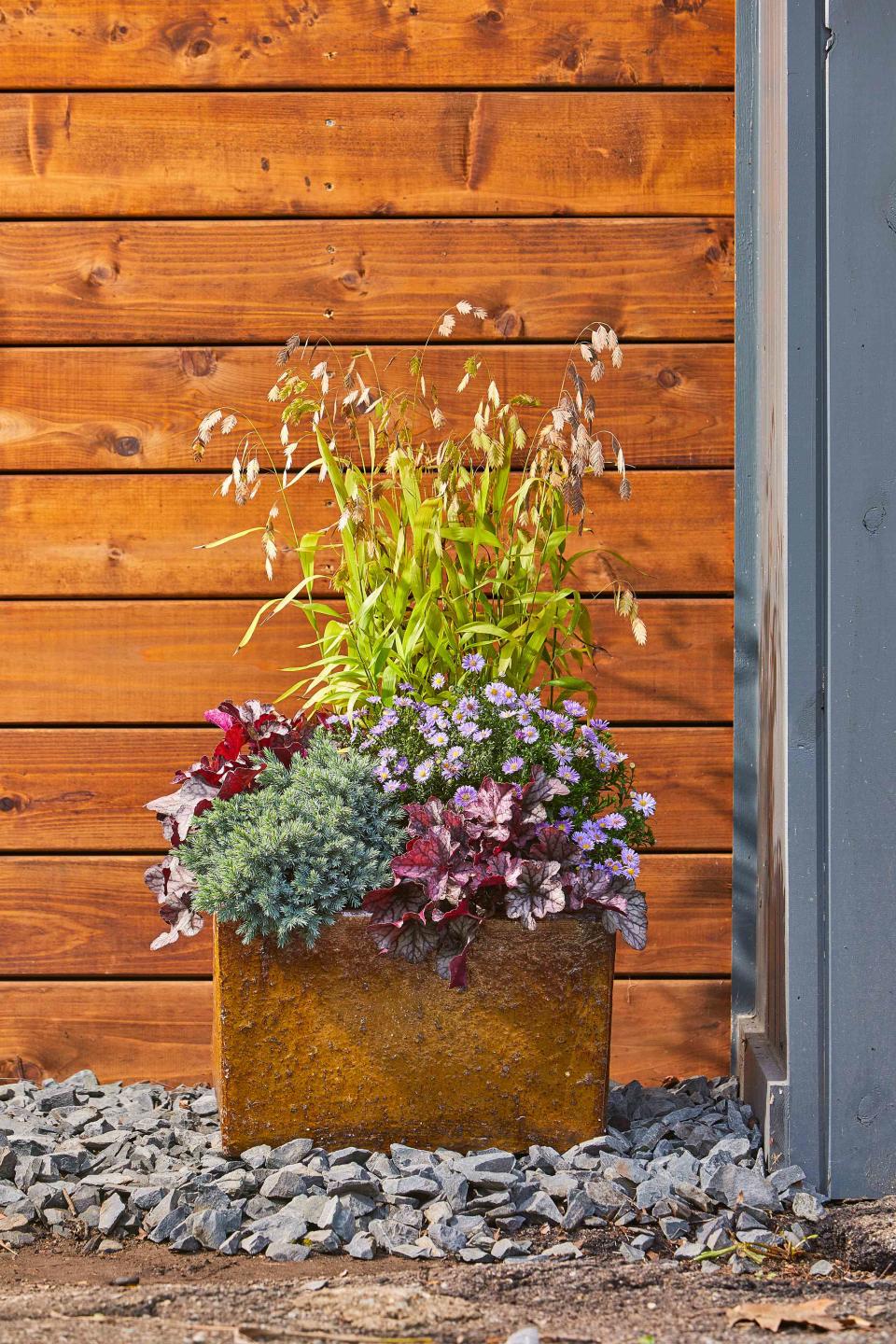
Carson Downing
Ornamental grasses make beautiful, low-maintenance additions to any garden. However, some types can spread aggressively or are considered invasive, so it's important to choose carefully. Avoid this headache and help wildlife out by selecting from the following well-behaved types of ornamental grasses that are native to North America. They'll add height and texture to your plant combinations, mixing well with perennials, annuals, and bulbs. Like other grasses, they don't have showy flowers, but their leaf color varies and changes through the seasons, from greens and blues to reds and gold. They also produce attractive seed heads that vary in color and shape and last in the garden for many weeks.
Many native ornamental grasses are host plants (food sources) for the larval or caterpillar stages of butterflies and moths. Most of these grasses stand upright through fall and winter, providing shelter for birds and over-wintering native insects. Birds eat the seeds if you leave the plants standing through the winter.
Prairie Dropseed

Bob Stefko
For your first try with native ornamental grass, prairie dropseed can't be beaten. The size and shape offer a perfect choice, especially toward the front of garden beds. Give it space to show off its graceful, fine-textured leaves and seed heads. This deer-resistant grass combines beautifully with other garden plants and will not travel (invade other parts of your garden). Some say the plant has a strong popcorn scent.
Name: Sporobulus heterolepis
Growing Condition: Full sun in dry to medium soil
Size: To 4 feet tall and 2 feet wide
Zones: 3-8
Little Bluestem
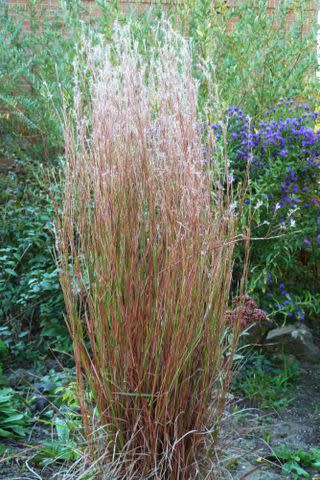
Denny Schrock
This striking, taller native ornamental grass will fit in most gardens where you need height and a focal point. The blue-green foliage with reddish tones in fall gives the plant unique beauty. Place it in well-drained soil where it will get plenty of sunlight. Although growing in the prairie close to other plants, don't crowd little bluestem in your garden. In rich garden soils, this grass may flop, preferring leaner soil conditions.
Name: Schizachyrium scoparium
Growing Condition: Full sun in dry to medium soils
Size: To 4 feet tall and 1 foot wide
Zones: 3-10
Sideoats Grama

Agnieszka Kwiecień / Wikimedia Commons
Sideoats grama is a short, deer-resistant grass with pendulous seed heads hanging on one side of the stems, giving the plant its common name. These ornamental seed stalks make this grass one of the most attractive and planted native grasses. They appear red when the stamens are shedding pollen. Small bright purple and orange flowers are especially attractive when the grass blooms. Sideoats grama is a larval host plant for several Skipper butterflies and moths.
Name: Bouteloua curtipendula
Growing Condition: Full sun in dry to medium soils
Size: To 2 feet tall and wide
Zones: 3-9
Blue Grama

Denny Schrock
Blue grama has unusual seed heads that hang off one side of the stems horizontally, resembling tiny streaks of light, combs, or eyebrows. Bluish-gray leaves turn golden brown in autumn, sometimes also developing interesting hues of orange and red. Small purplish-tinged flowers appear on arching stems above the foliage in early to mid-summer, typically bringing the total height of the plant to 20 inches tall. Blue grama can handle hot and dry sites.
Name: Bouteloua gracilis
Growing Condition: Full sun in medium to dry soils
Size: To 2 feet high and wide
Zones: 3-10
Tufted Hairgrass

Liane M. / Getty Images
Tufted hairgrass has fine-textured, hair-like seed heads held above mounds of wiry, green foliage. The leaves take on golden tones late in the season. This native ornamental grass doesn't mind wet soil and will grow in some shade. Several butterflies in North America use tufted hairgrass as a larval food plant. It can have a disheveled appearance in late winter, leading to accidental removal by gardeners thinking it's a weed before new growth appears in spring.
Name: Deschampsia cespitosa
Growing Condition: Partial shade in medium to wet soils
Size: To 3 feet high and 2 feet wide
Zones: 4-8
Indiangrass
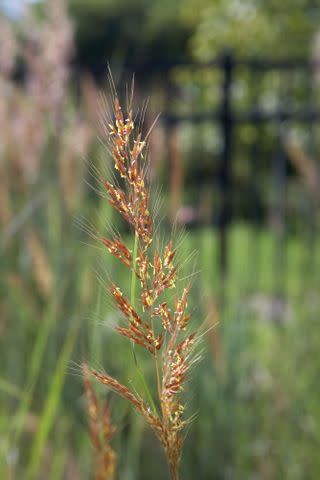
Dean Schoeppner
The upright foliage of Indiangrass ranges from green to gray-green or blue-green, then turns gold in the fall. The seed heads are long, tan-yellow feathery spikes that appear on bright golden-yellow stems when pollen is shedding and turn bronze as the season continues. The leaf branching creates a wider plant than other tall grasses. Drought and deer-resistant, Indiangrass helps support wildlife, including various songbirds.
Name: Sorghastrum nutans
Growing Condition: Full sun in medium to dry soils
Size: To 6 feet high and 2 feet wide
Zones: 3-9
Big Bluestem
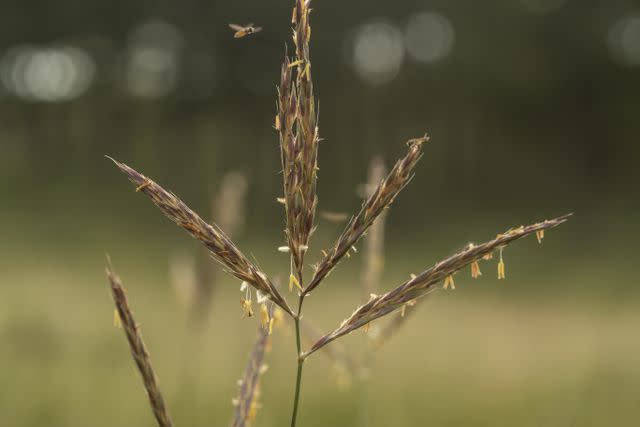
Kezar Media
Big bluestem is easy to identify by its 3-branched seed heads that resemble a turkey foot. Each branch has a purple spike that turns bronze in the fall. The foliage changes color from green to blue-green in summer, to a deep red-bronze in the fall. It provides interest well into the winter. The growth stays compact until midsummer and compliments other perennials without overpowering them. This grass is a host plant for numerous species of skippers, and it provides shelter and food for songbirds.
Name: Andropogon gerardii
Growing Conditions: Full sun in moist to dry soils
Size: To 8 feet high and 2 feet wide
Zones: 3-9
Switchgrass
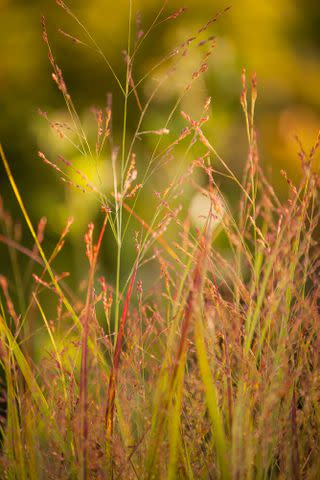
Bob Stefko
Growing across North America, switchgrass tolerates a wide range of soils and climate conditions. Leaf color ranges from deep green to gray green to greenish purple. Airy, bronze to beige panicles of flowers appear in mid-summer above the upright foliage. This native grass is attractive throughout every season, even providing winter interest. Form and foliage color vary widely between varieties.
Name: Panicum virgatum
Growing Condition: Sun and light shade in moist to dry soils
Size: To 6 feet high and 2 feet wide
Zones: 3-8
Note: This native grass may be aggressive in ideal garden conditions, where it can spread by slowly creeping rhizomes or fallen seeds.
Northern Sea Oats
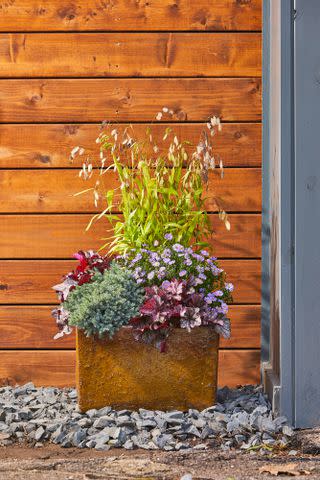
Carson Downing
With their interesting seed heads and bamboo-like foliage, northern sea oats are a highly ornamental native grass. The bobbing flat seed heads look like seeds of agricultural oats but the two plants aren't related. Lime green in the summer, the seed heads mature to a golden bronze. The green leaves in spring change to copper in fall and to brown in winter.
Name: Chasmanthium latifolium
Growing Condition: Full sun or part shade in well-drained soil
Size: To 4 feet tall and 2 feet wide.
Zones: 4 to 9
Note: This native grass may become aggressive in ideal garden conditions and increase by self-seeding.
Deergrass

Jacob Fox
Deergrass grows in sandy or well-drained soils in the southwestern United States and parts of Mexico. It adapts to a wide range of growing conditions. This evergreen native grass has gray-green leaves that hold their color even through droughts. The showy, slender flowers emerge grayish and mature to buff and persist into winter.
Name: Muhlenbergia rigens
Growing Condition: Full sun to partial shade in moist to dry, well-drained soil
Size: To 3 feet tall and wide
Zones: 7-9
All of these native ornamental grasses work well with perennials and other plants in your landscape, especially other natives. During the growing season, use tall grasses to help other plants stand upright and shorter grasses to cover the leafless stems of perennials. Just be sure to choose types of native grasses with the same needs as the other plants you want to grow with it so your whole garden will thrive.

